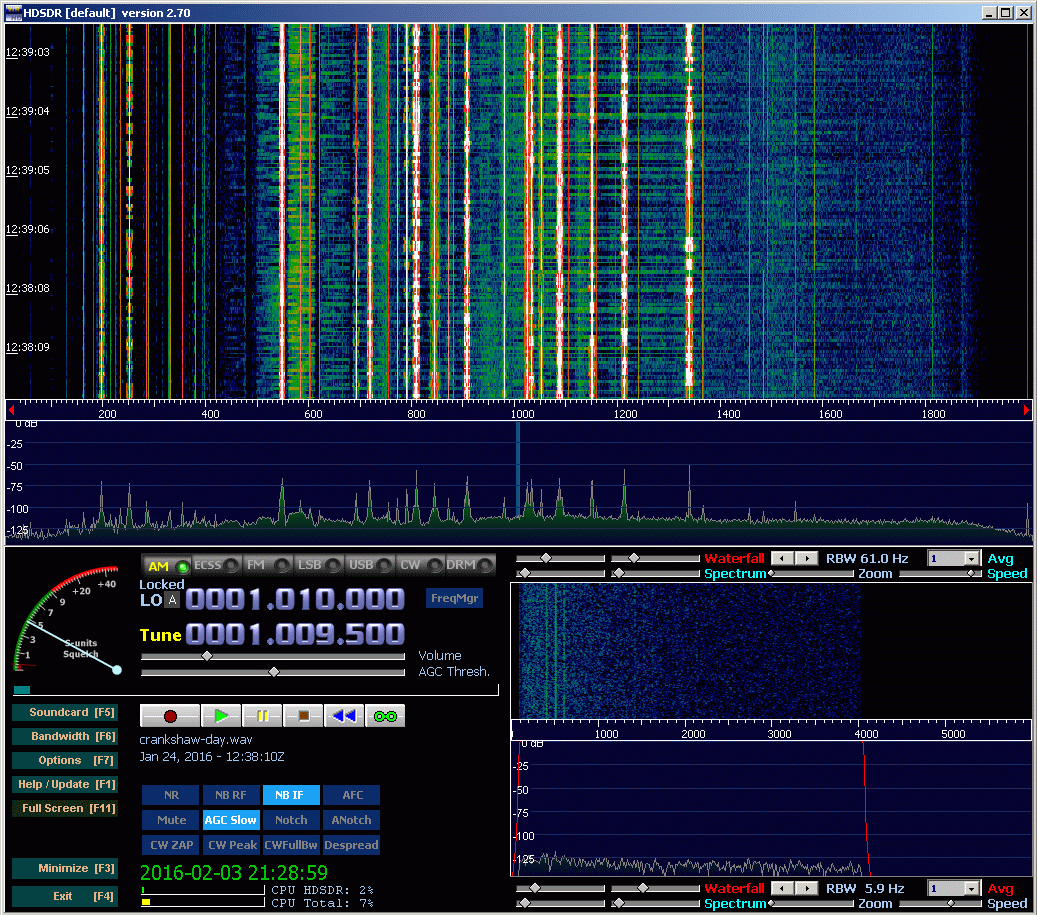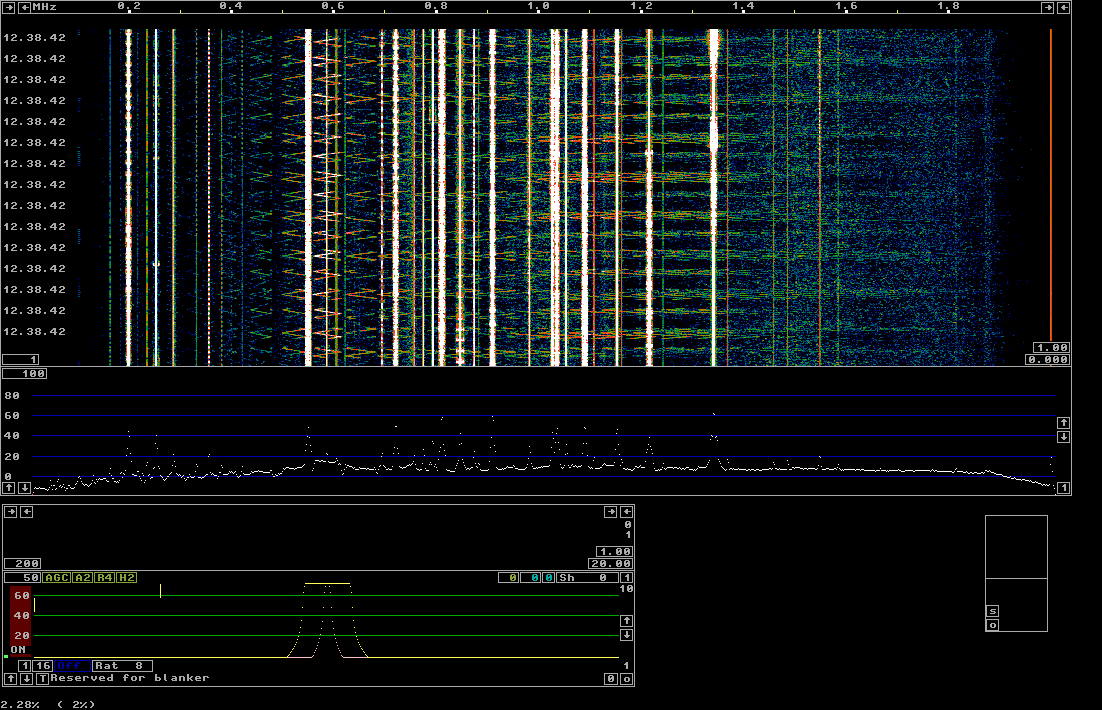
|
Sometimes interference can not be eliminated at source,
but with appropriate software it may be possible to remove
it in the computer when using SDR.
One interesting case is presented on this page. Two recordings, one at day-time where the interference more or less dominates and another at night-time when the interference is fairly weak in relation to most MW stations, but strong enough to make interesting DX signals un-audible. The two recordings were made January 2016 by Paul Crankshaw in Troon, Scotland using a Perseus and an ewe antenna pointing 300 degrees. crankshaw-day.zip (349816337 bytes) is a zipped version of crankshaw-day.wav crankshaw-night.zip (51096990 bytes) is a zipped version of crankshaw-night.wav The purpose of this page is to make the files available as suitable test files for noise blanker development in SDR software. The performance of Perseus v5, HDSDR and Linrad with current versions of January 2016 is demonstrated with video recordings. Wideband blankers are useless in perseus.exe and HDSDR while the dumb wideband blanker in Linrad works - but with limited performance. The smart wideband blanker in Linrad is very efficient on wideband pulses but useless for the interference presented on this page. This interference is a frequency modulated signal with a fundamental in the range about 62 to 69 kHz. It is frequency modulated with a triangular waveform. The strongest overtone is the 9th tone in the range 560 to 617 kHz. The signal is also abruptly on-off keyed. It has no similarity whatsoever with wideband pulses. It does however show similarities with this interference: Awful QRM on Medium Frequencies. The narrowband blankers in perseus.exe and in HDSDR give a significant improvement on readability, but Linrad does not (yet?) have a narrowband blanker. By setting slow attack and zero release and hold times for the AGC one can reduce impulse noise significantly in Linrad. This is demonstrated in the night time video. The vectorial blanker in perseus.exe is excellent in the day time video, but seems somehow unstable in the night time recording. My guess is that this could be fixed fairly easily. The linrad day net video shows how the interference looks when the signal is split into two components. One, I, that contains the AM modulated signal plus 50% of the interference and another, Q, that contains interference only. It is pretty obvious that Q contains a lot of information that should be possible to use to remove the interference from I. The vectorial blanker in Perseus.exe is doing something smart that is somehow equivalent. Narrowband interference fighting may be an interesting field in SDR development. I do not want to spend a lot of time finding the best tools to optimize performance for one particular interference source (like the one presented on this page.) Before I would consider an optimized narrowband process in Linrad I would need several more recordings with different examples of narrowband interference (interference that is not simple wideband pulses that are shaped by the frequency response of the hardware.) If you have interference problems, please make a recording available to me so I can make a similar investigation and perhaps, with time have enough information to decide what strategy one might use. Note that AM is a very special case in that one can use a quadrature detector with a reference that is phase locked to the carrier. This would work only when there is not multipath propagation that would phase shift sidebands differently. Another problem is the presence of more stations on the same channel. Real life recordings with real ionospheric effects and interfering stations are needed. I could set up simulations and do fantastic things to remove (known) interference - but solving problems that are not relevant is mis-use of time. (But fun sometimes...) Figures 1 to 3 show the screen with Perseus, HDSDR and Linrad respectively when processing the day-time recording. All the waterfalls have been set to use the same palette. |

|
| Figure 1.The day-time recording with perseus.exe. |

|
| Figure 2.The day-time recording with HDSDR. |

|
| Figure 3.The day-time recording with linrad. |
|
The day time videos show my attempts to optimize settings for the station on 585 kHz where the interference is particularly strong. The spectrum in figure 3 clearly shows that the interference has its maximum on this frequency. The vectorial blanker in perseus v5 is the winner here. The night time videos show my attempts to optimize reception for the weak signal on 1189.89 kHz. The vectorial blanker in perseus.exe seems a bit unstable. It seems to me it would need vectors spanning a longer time. That is because it strongly depends on the baseband sampling rate which makes me guess that the vector length is fixed in samples and not in time. If you can produce better processing of the files on this page with any software, please put a video on youtube and make a link available to me so I can add it on this page. To SM 5 BSZ Main Page |